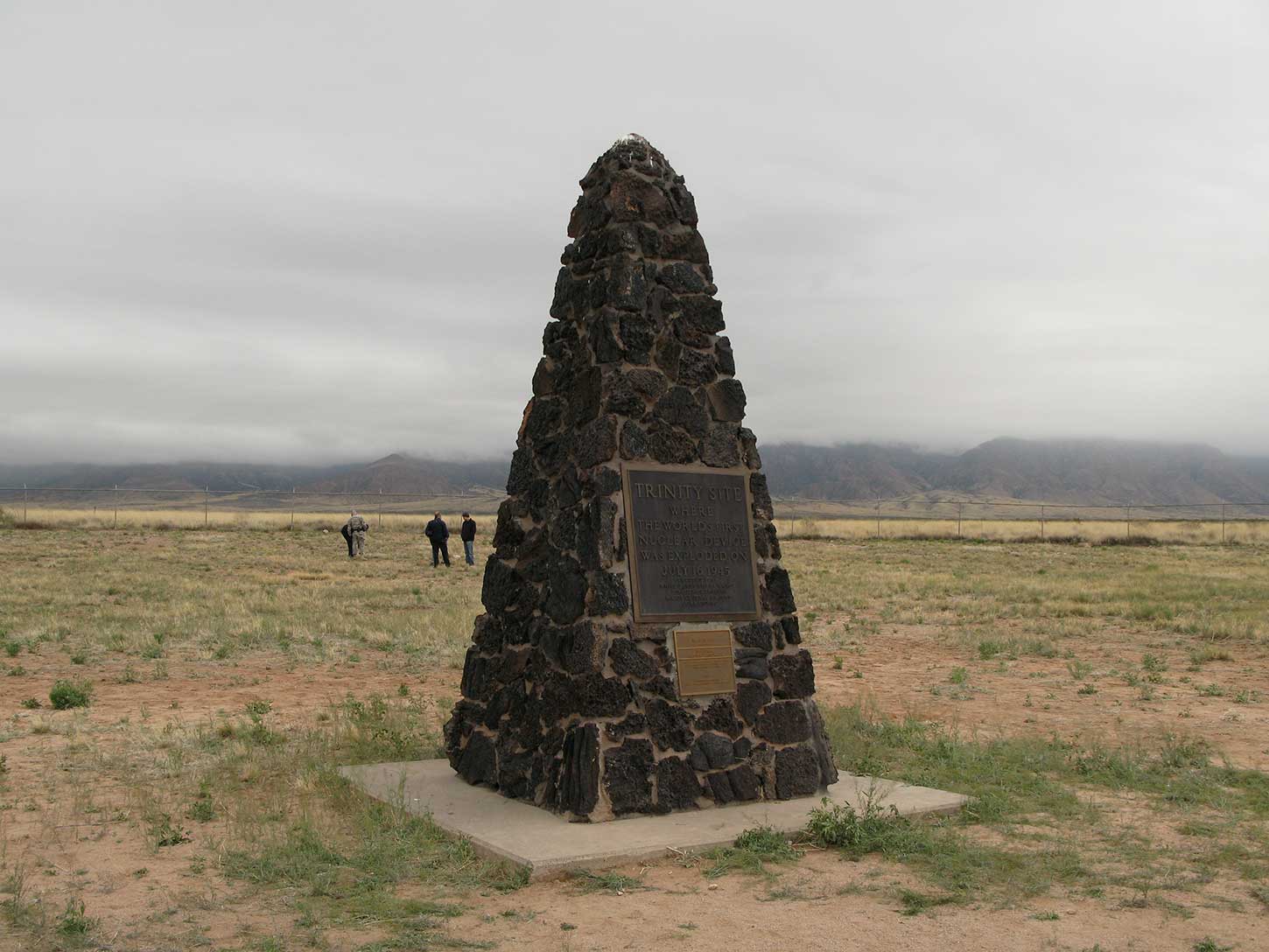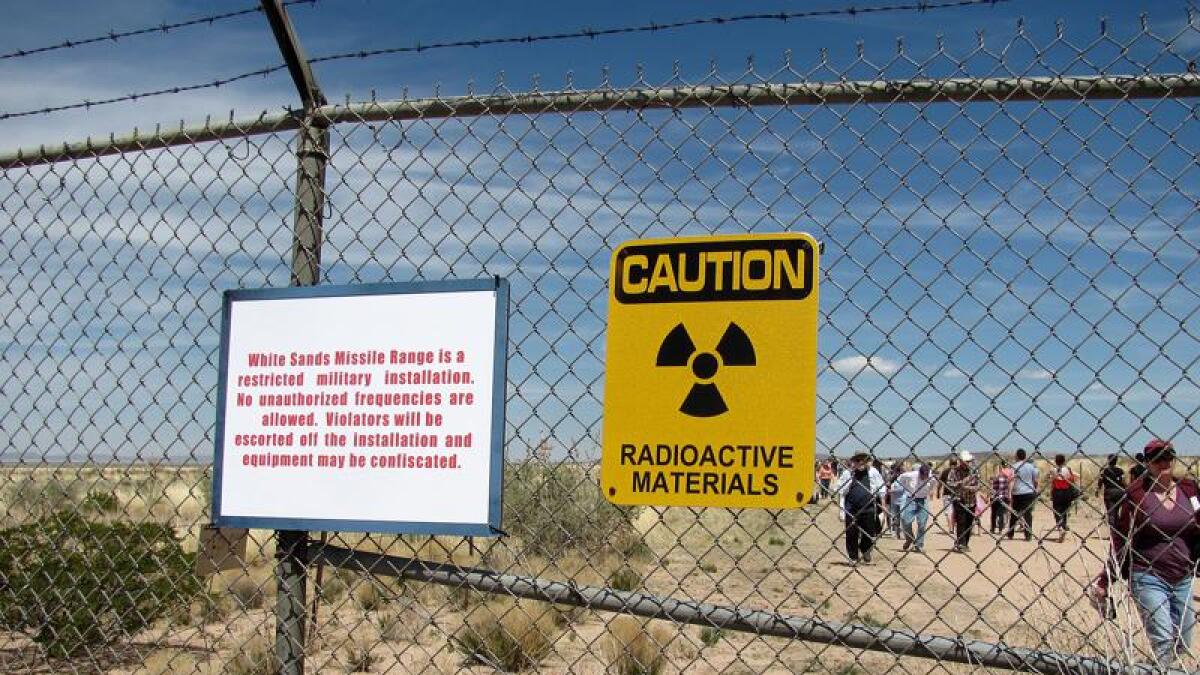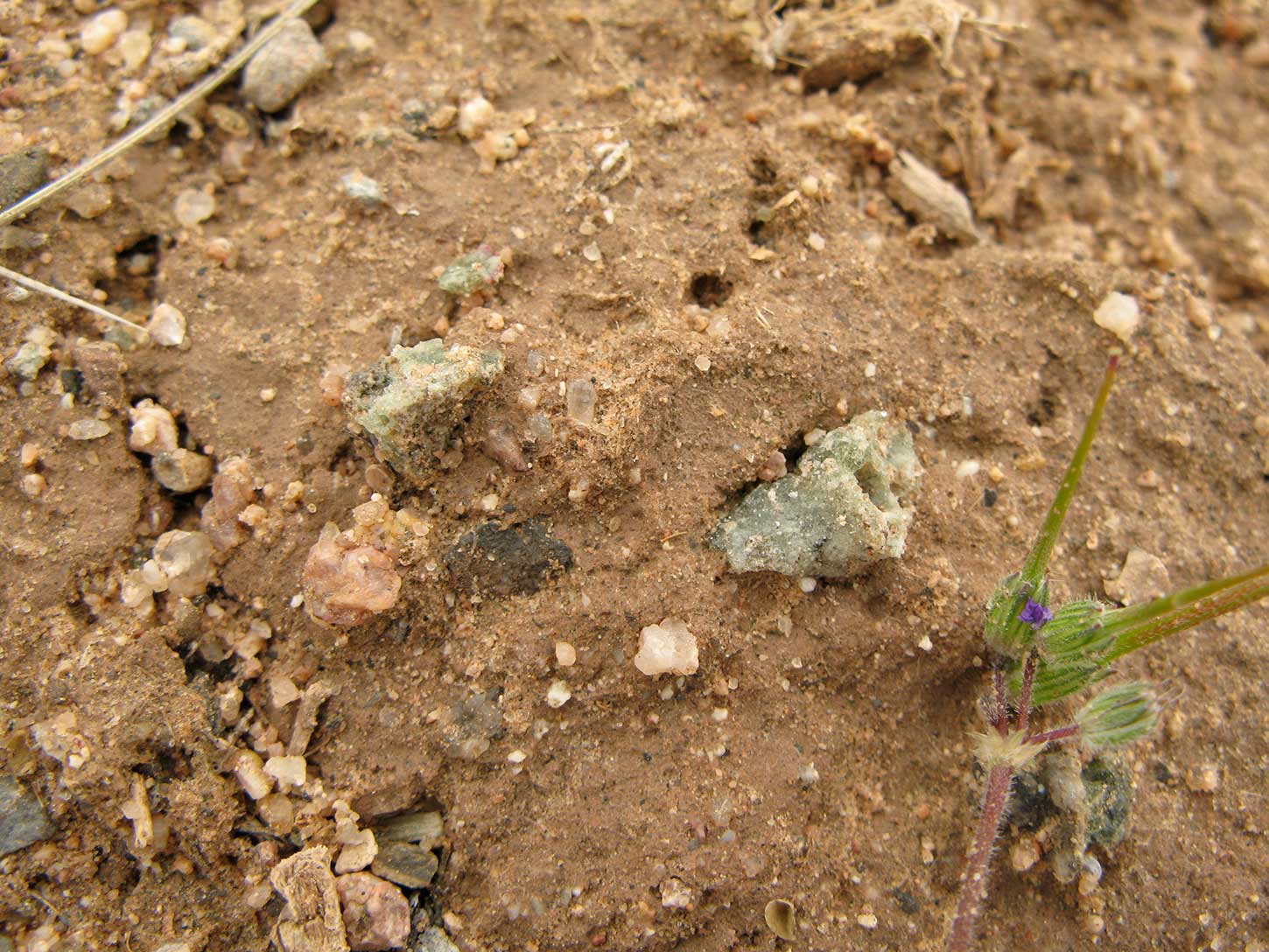Trinity Site
Overview
Trinity Site is where the first atomic bomb was tested at 5:29:45 a.m. Mountain War Time on July 16, 1945. The 19 kiloton explosion not only led to a quick end to the war in the Pacific but also ushered the world into the atomic age. All life on Earth has been touched by the event which took place here.

The 51,500-acre area was declared a national historic landmark in 1975.
What You'll See
Included on the Trinity Site tour is Ground Zero where the atomic bomb was placed on a 100-foot steel tower. A small monument now marks the spot. Visitors also see the McDonald ranch house where the world's first plutonium core for a bomb was assembled. The missile range provides historical photographs and a Fat Man bomb casing for display. There are no ceremonies or speakers.
Public Tours Dates and Times
Trinity Site is open to the public twice a year—on the first Saturday in April and October.
Portable toilet facilities are available on site. Hot dogs and sodas are sold at the parking lot. Cameras are allowed at Trinity Site, but their use is strictly prohibited anywhere else on White Sands Missile Range.

In deciding whether to visit ground zero at Trinity Site, the following information may prove helpful to you.
Radiation levels in the fenced, ground zero area are low. On an average the levels are only 10 times greater than the region's natural background radiation. A one-hour visit to the inner fenced area will result in a whole body exposure of one-half to one milliroentgen.
To put this in perspective, a U.S. adult receives an average exposure of 90 milliroentgens every year from natural and medical sources. For instance, the Department of Energy says we receive between 35 and 50 milliroentgens every year from the sun and from 20 to 35 milliroentgens every year from our food. Living in a brick house adds 50 milliroentgens of exposure every year compared to living in a frame house. Finally, flying coast to coast in a jet airliner gives an exposure of between three and five milliroentgens on each trip.
Although radiation levels are low, some feel any extra exposure should be avoided. The decision is yours. It should be noted that small children and pregnant women are potentially more at risk than the rest of the population and are generally considered groups who should only receive exposure in conjunction with medical diagnosis and treatment. Again, the choice is yours.
At ground zero, Trinitite, the green, glassy substance found in the area, is still radioactive and must not be picked up.

Typical radiation exposures for Americans Per The National Council on Radiation Protection
- On hour at ground zero = ½ mrem
- Cosmic rays from space = 40 mrem at sea level per year
- Radioactive minerals in rocks and soil = 55 mrems per year
- Radioactivity from air, water, and food = anywhere from 20 to 400 mrem per year
- About 22 mrem per chest X-ray and 900 mrem for whole-mouth dental X- rays
- Smoking one pack of cigarettes a day for one year = 40 mrem
- Miscellaneous such as watch dials and smoke detectors = 2 mrem per year
For more information, contact the White Sands Missile Range Public Affairs Office at (505) 678-1134/1700.
How to Get There
Trinity is located on the northern end of the 3,200-square-mile White Sands Missile Range, N.M., between the towns of Carrizozo and Socorro, N.M. There are two ways of entering the restricted missile range on tour days.
Visitors can enter through the range's Stallion Range Center which is five miles south of Highway 380. The turnoff is 12 miles east of San Antonio, N.M. , and 53 miles west of Carrizozo, N.M. The Stallion gate will be open 8 a.m. to 2 p.m. Visitors arriving at the gate between those hours will receive handouts and will be allowed to drive unescorted the 17 miles to Trinity Site. The road is paved and marked.
The other way of entering the missile range is by travelling with a caravan sponsored by the Alamogordo (N.M.) Chamber of Commerce. The caravan forms at the Otero County Fairgrounds in Alamogordo and leaves at 8 a.m. Visitors entering this way will travel as an escorted group with military police to and from Trinity Site. The drive is 170 miles round trip. There are no service station facilities on the missile range. The caravan is scheduled to leave Trinity Site at 12:30 p.m. for the return to Alamogordo. The caravan may leave later if there is a large number of vehicles in the returning caravan.
Source
Much of the text on this page from "Trinity Site, A National Historic Landmark" by White Sand Missile Range, NM.